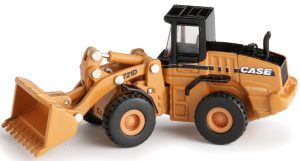Complete digital official shop manual contains service, maintenance, and troubleshooting information for the Case 750L, 850L Crawler Dozer. Diagnostic and repair procedures are covered in great detail to repair, maintain, rebuild, refurbish or restore your Case 750L, 850L Crawler Dozer like a professional mechanic in local service/repair workshop. This cost-effective quality manual is 100% complete and intact as should be without any missing pages. It is the same factory shop manual used by dealers that guaranteed to be fully functional to save your precious time.
This manual for Case 750L, 850L Crawler Dozer is divided into different sections. Each section covers a specific component or system and, in addition to the standard service procedures, includes disassembling, inspecting, and assembling instructions. A table of contents is placed at the beginning of each section. Pages are easily found by category, and each page is expandable for great detail. It is in the cross-platform PDF document format so that it works like a charm on all kinds of devices. You do not need to be skilled with a computer to use the manual.
“87728445.pdf”
750L, 850L TIER 3 Crawler Dozer Repair Manual
1,513 pages
“87479855.pdf”
750L, 850L TIER 3 Crawler Dozer Operator’s Manual
144 pages
EXCERPT:
POWER PRODUCTION – STARTING SYSTEM
Engine starter- Remove
1. Park the machine on a level surface.
2. Lower the attachments to the floor.
3. Apply the parking brake and stop the engine, remove the key from the ignition switch.
4. Fasten a Do Not Operate tag to the instrument panel.
5. Open the left rear ROPS door.
6. Put the battery disconnect switch in the off position.
7. Open the right-hand side engine panel.
8. Remove the right-hand side lower panel.
NOTE: If two batteries are installed, there are two battery cables connected to the starter.
9. Fasten identification tags to the wires for the starter.
Disconnect the wire from the bottom of the starter solenoid. Pull the rubber boot away from the terminal
and disconnect the battery cable(s) and the three wiring harness from the side of the starter solenoid.
10. Support the starter. Loosen and remove the two bolts, washers and clamp. Remove the starter.
Next operation:
Engine starter- Disassemble (B.SO.A) or Engine starter- Preliminary test (B.SO.A).
Engine starter- Install
Prior operation:
Engine starter- Electrical test (B.80.A),
1. Position the starter in the flywheel housing.
2. Install the two bolts, washers, and clamp to fasten the starter to the flywheel housing. Torque the bolts to 68 – 77 Nm (50 – 57 lb ft).
3. Connect the battery cable(s) and the three wiring harness wires to the side of the starter solenoid and torque to 2.6 – 4.6 Nm (23 – 41 lb in). Connect the wire to the bottom of the starter solenoid and torque to 17.7- 24.5 Nm (13- 18 lb ft). Push the rubber boot onto the terminal.
4. Install the right-hand side lower panel.
5. Close the right-hand side engine panel.
6. Put the battery disconnect switch in the on position.
7. Close the left rear ROPS door.
8. Remove the Do Not Operate tag from the instrument panel.
Engine starter – Preliminary test
Prior operation:
Engine starter – Remove (B.SO.A).
Prior operation:
Before starting the No-Load Test the following testing equipment must be obtained:
(a) One Sun Electric CAS10147 Tester, an equivalent tester, or separate pieces oftest equipment.
(b) One hand held tachometer to measure the speed of the armature shaft.
(c) One remote starter button to actuate the starter.
(d) One fully charged 12 volt battery to supply the electricity to turn the starter.
Prior operation:
Before starting the No-Load test, check to see if:
(a) The gear on the starter drive can be pulled out of the starter housing.
(b) The starter drive can be turned. To do this, pull the gear on the starter drive out of the starter drive housing. Turn the gear to turn the starter drive and the armature. If the starter can not be turned, disassemble the starter and make repairs as needed.
NOTE: The starter needs to be removed from the engine before the No-Load Test can be done.
NOTE: The No-Load Test should be done at 20 oc ( 68 °F).
1. If the Sun Electric CAS10147 is being used, turn the AMP Range switch to ( 0- 100 amps), turn the Volt
2. Range switch to ( 18 – 40 volts), flip the Volt Lead switch to the “EXT.” position and turn the Load Control dial to the “OFF” position.
3. If the other test equipment is being used, connect the test equipment according to the above procedure and follow the manufacturer’s instructions.
Fasten the starter in a vise or use another method to prevent the starter from moving. This must be done to prevent personal injury.
Connect the positive battery cable to the battery terminal on the starter solenoid and the negative battery cable to the mounting flange of the starter.
(1) Positive battery cable
(2) Battery terminal
(3) Negative battery cable
…
